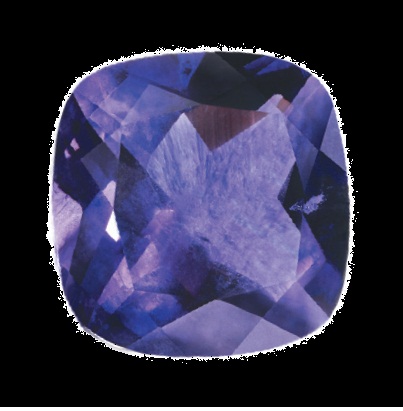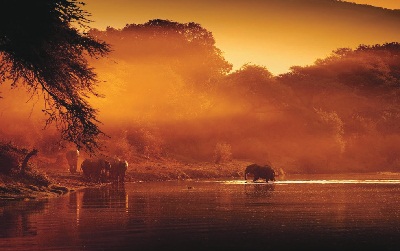

A land that overflows with rich resources that nature has to offer, Zambia is known for its lucrative mining heritage. Enveloped by Congo on the north, Tanzania on the north-east, Malawi to the east, Angola to the west and Mozambique, Zimbabwe, Botswana and Namibia to the south, the Zambian economy has been highly dependent on its copper resources and its coloured gemstone deposits to generate income.
A scrutiny into the mining history of Zambia throws light on the fact that a probable discovery of gemstones in the region happened as early as 1928 by a Rhodesian Congo Company in a place called Miku. Then, the Brazilian mining conglomerate Rio Tinto set its foot in Zambia in 1953. However, at that time, both these mining companies were unsuccessful in finding any gemstone deposits. But in the late 60’s, a geological survey in the region led to the discovery of a plethora of gemstone deposits and in turn opened the gates to mining companies from all over the world. Zambia then became known for not just copper but also gemstones like emeralds, amethysts, opals, aquamarines and more.
Today, Zambia still remains one of the biggest exporters of emeralds in the rough form, accounting for almost 20 per cent of global supplies following Colombia and Brazil. Though training the locals in cutting and polishing has been gradually undertaken since 2011, Lapidary was nonexistent in this sector – Zambia’s role to a large extent even today goes as far as producing crude gemstones.
Gemstones Found in Zambia
Amethyst – Some of the best and rarest quality of amethysts are found in the Kalomo & Mumbwa regions of Zambia. The amethysts found here are of deep, violet in hue and those with specs of red in them are supposed to be most precious in value.

Emerald – Mining of emeralds in Zambia became commercially prevalent only in the 50’s. So intense are their colour and clarity that even the smaller emeralds that are below 0.5 ct in size are considered extremely rare. One out of every five emeralds are produced in Zambia and they bring in foreign exchange earnings of about $ 200 m a year. Zambian emeralds are considered cleaner and more saturated in colour as compared to those that are found in Columbia. Zambian emeralds have been sold for as much as $30,000 per carat.
Tourmaline – Over the last few years, tourmalines have become extremely popular and this may have been because of Paloma Picasso’s signature collection for Tiffany’s some years ago. Tourmaline mining in Zambia has been going on for many years now in mines such as Hofmeyer near Nyimba region. The pink ones (rubelite) that are widely popular are found near Mkushi region and more deposits of tourmalines are constantly being discovered in the Eastern Province.
Though these gemstones have put Zambia in the world map for being one of the richest resources of corresponding minerals, Zambia is known for its production of citrines, garnets and sapphires as well.
The Big Players
There are many small-scale miners in Zambia but only a
handful of big miners have made it successful in this region.
Kagem mine, 75 per cent of which is owned by the UK-based
mining company Gemfields, has been responsible for the
promotion of Zambian emeralds in a big way. It covers an
area of 41 square km and is located in the central region of
the Ndola Rural Emerald Restricted Area (“NRERA”), in the
Copperbelt Province of Zambia. An open pit emerald mine,
the operation runs to a maximum of 130 meters in depth and
750 meters in width. Kagem is one of the biggest producers
of emeralds in the world and accounts for almost 25 per cent
of emeralds produced in the world. Gemfields again owns
50 per cent stake in Kariba amethyst mine in the Southern
part of Kalomo district of Zambia. The Mine covers a span
of 396 hectares and has produced some of the most coveted
amethysts in the world. Its deep purple hue along with its
brilliant lustre makes the amethysts so high in value. Over 90
per cent of the amethysts produced in Zambia are mined at
Kariba with annual production of approximately 800 tonnes
per annum, making it one the largest producers of amethysts
in the world (Source: Gemfields). Another mining giant in the
Copperbelt Province of Zambia is Grizzly, again known for its
emeralds. Grizzly was bought in by Israeli diamond billionaire
Lev Leviev recently and has been rechristened as Gemcanton
Investments Holdings.
The Hofmeyr mine has produced some top-class tourmalines in all colours. Located near the town of Nyimba, a large pegmatite of almost 5 m thickness can be seen for over 150m running roughly North-South. Tourmalines found here are of extraordinary quality from pinks to bottle green and even blood red, blue and turquoise.

Current Scenario
Though the gemstone production in Zambia
has been robust, the country’s mining sector faces
many hardships. Only three mining companies have
profitable operations in Zambia, while the small-scale
miners don’t have the wherewithal to produce good
quality of gemstones even though they own small
mining deposits throughout the area. Though the EU
Union offered 30 million euros to the small-scale
minors a few years ago, not much came out of it. All
problems point to lack of funding, equipment and also
geological information. Zambia doesn’t benefit much
from its riches and what has worked in their favour
is the public-private partnership as seen in the case
of Kagem mine developed to such a large extent by
Gemfields.
Zambia being a prolific supplier of gemstones does not practice gemstone cutting and this has been one of its major drawbacks. The faceting workshops resulted in poor craftsmanship. However, some workshops that has hired external expertise to train the indigenous groups in faceting has proven to be beneficial.
Follow DiamondWorld on Instagram: @diamondworldnet
Follow DiamondWorld on Twitter: @diamondworldnet
Follow DiamondWorld on Facebook: @diamondworldnet
